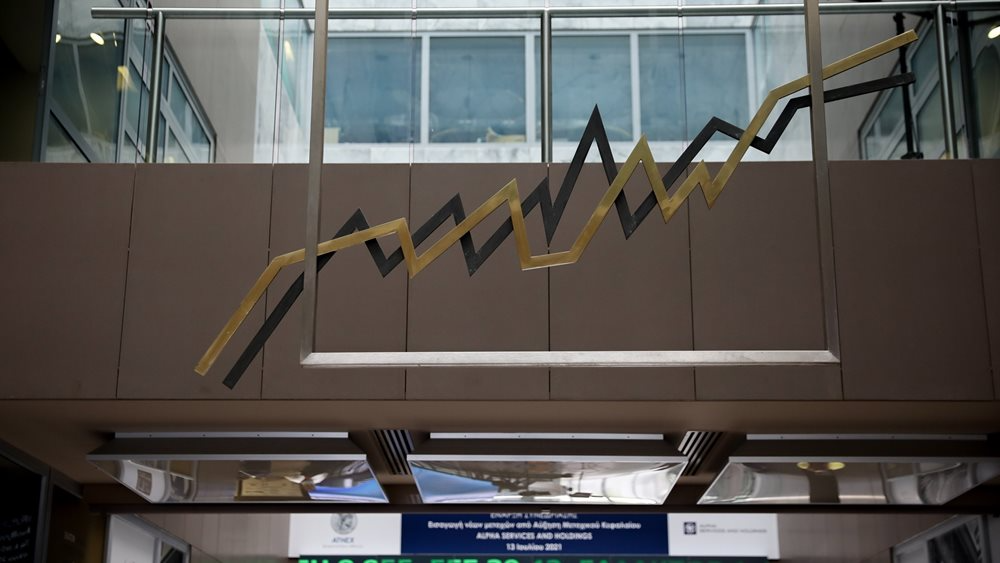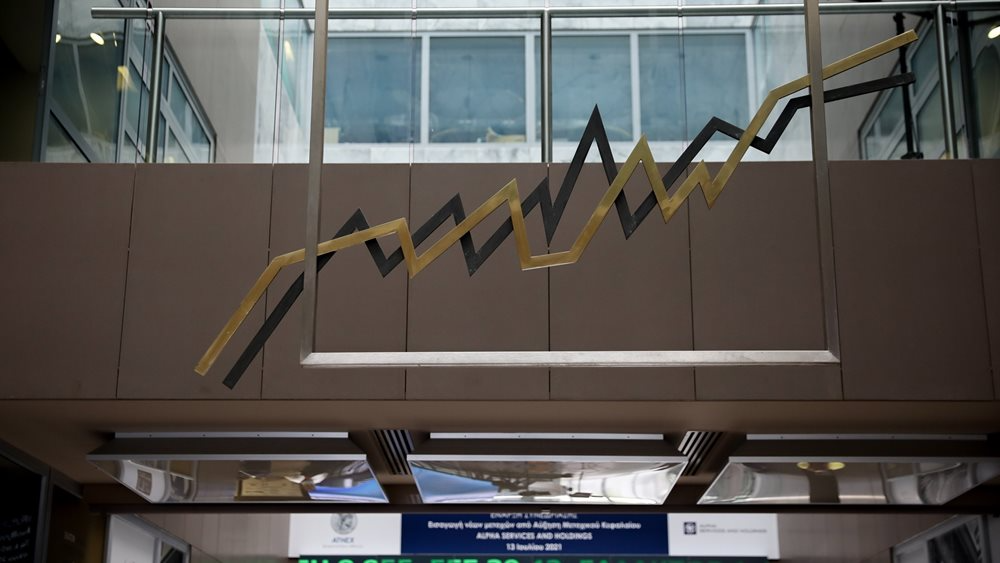
In the Financial Stability Report, Bank of Greece Governor Giannis Stournaras recommends to the managements of the banking groups that they take actions that will further strengthen the capital reserves of the banks and considers that the continuation of profitability is the "key" for capital soundness of the banks.
I. EXECUTIVE SUMMARY
Risks to financial stability remain elevated. The heightened geopolitical risks with the ongoing war in Ukraine and the rekindling of conflicts in the Middle East, compounded by rising food and energy prices, continue to play a key role in the persistence of inflationary pressures.
The tightening of monetary policy with a view to bringing inflation back to the 2% target over the medium term is affecting economic activity, the capacity of firms and households to repay existing loans,
as well as the demand for new loans.
In addition, the risk of an abrupt repricing of assets in global money and capital markets remains, with potential spillover effects on the global non-bank financial system. On the upside, the banking sector’s strong core profitability and the Greek sovereign’s return to investment grade, largely mitigate adverse effects.
In the first half of 2023, the Greek economy continued to grow, while the rate of inflation slowed down.
Real growth of gross domestic product (GDP) maintained some of its 2022 momentum and stood at 2.4% in the first half of 2023, mainly driven by substantially stronger private consumption and investment.
Overall, for 2023, the growth rate according to the Bank of Greece’s latest estimates is projected to be 2.4%, remaining above the euro area average, but clearly lower than in 2022.
Continued economic growth has also contributed to a further drop in unemployment.
Inflation slowed markedly, falling to 2.4% on an annual basis in September 2023, down from 9.3% in December 2022. Disinflationary trends already observed since September last year have strengthened, mainly on account of a gradual decline in energy prices and the impact of monetary policy measures.
However, upward pressures on prices, notably of food, services and non-energy industrial goods, keep inflation high3 and affect overall business operating costs and household disposable income.
The financial system is in a much better position than in the past to withstand potential shocks.
The process of cleaning up banks’ balance sheets and improving their key profitability and liquidity ratios has continued. Concurrently, with Greece’s market access and investor confidence now fully restored, in the period March-October 2023 all equity prices and, in particular, the banking index rose.4 The prospect of an upgrade of the Greek government’s credit rating and improved bank results led the market to price in a positive outlook for the banking sector.
However, since September the correction in global stock markets has dragged the valuations of Greek equities lower.
The liquidity and funding conditions of the Greek banking sector improved further in January - September 2023.
Private sector deposits continued to increase in January-September 2023 (+2.5% on an annual basis), keeping Greek banks’ liquid assets at a high level, despite the substantial repayment of a large part of European Central Bank (ECB) funding via the Targeted Longer-Term Refinancing Operations (TLTRO III).5 Specifically, in September 2023, the balance of residents’ deposits in Greece stood at EUR 199.4 billion, reaching a new ten-year high.
However, in an environment of rising policy rates and Greek bond yields, Greek banks’ funding by the Eurosystem and capital markets became more expensive.
In the first half of 2023, credit institutions’ asset quality improved marginally.
The ratio of non-performing loans (NPLs) to total loans in June 2023 stood at 8.6%, compared with 8.7% in December 2022. The total stock of NPLs stood at EUR 12.7 billion, down by 3.8% or EUR 501 million from December 2022.6 It should be noted that all four significant banks have now reached their single-digit NPL targets, with one of them below 5%.
However, despite the reduction in the overall stock of NPLs, there are concerns about a net inflow of new NPLs in the first half of the year across loan portfolios. In addition, it is worth noting that the less significant banks’ NPL ratio
remains particularly high, standing at 44% in June 2023.
Greek banking groups’ core profitability improved significantly.
In the first half of 2023, profits after tax and discontinued operations amounted to EUR 1.9 billion, against profits of EUR 2.3 billion over the same period of 2022. Higher net interest income contributed positively, as a result of higher key ECB interest rates. As a result, income from core banking business (i.e. net interest and commission income) increased substantially by 46.7%. By contrast, the significant decrease in income from financial operations in the first half of 2023 is due to the fact that in the first half of 2022 such income included non-recurring gains from transactions in Greek government bonds and profits from derivatives and hedging instruments, as well as income from the carve-out and sale of the payment acquiring business by all four significant banks.
Concurrently, operating and credit risk costs remained low. As a result, banking groups posted significant profits after tax and discontinued operations, and their Return on Assets (RoA) and Return on Equity (RoE) ratios stood at 1.2% and 12.5%, respectively.
The capital adequacy of Greek banking groups declined slightly and the quality of their prudential own funds remains low.
In June 2023, the Common Equity Tier 1 ratio (CET1 ratio) on a consolidated basis dropped to 14.2%, from 14.5% in December 2022, mainly due to the negative impact from IFRS 9 implementation and the increase in risk-weighted assets.
This impact was mitigated by strong profitability over the half-year and capital enhancement actions by banks (e.g. issuance of securities and capital increases).
Similarly, the Total Capital Ratio (TCR) fell to 17.3%, from 17.5%. It should be noted that these indicators are below the European Union average (June 2023: CET1 16% and TCR 20.0%).10 In addition, the quality of prudential own funds of Greek banks remains low. In June 2023, Deferred Tax Credits (DTCs) amounted to EUR 13.4 billion, representing 51% of total prudential own funds (down from 52% at end-2022).
In addition, prudential own funds of banking groups include Deferred Tax Assets (DTAs) of EUR 2.4 billion, which make up around 9%. It should be noted that, although deferred tax assets (DTAs) of EUR 3.9 billion are not included in banks’ prudential own funds, sufficient future profitability is necessary in order for them not to pose a risk to banks’ capital base over the medium to long term.
***
The implementation of macroprudential policy measures enhances financial stability.
The Bank of Greece, as macroprudential authority, assesses on a quarterly basis the intensity of cyclical systemic risk and the appropriateness of the countercyclical capital buffer rate (CCyB) for Greece and sets or adjusts it, if necessary. For 2023, this rate was maintained at 0%, the lowest possible level. The analysis of the additional indicators examined by the Bank of Greece points to emerging cyclical systemic risks in certain areas, such as residential real estate prices and the current account.
Overall, however, it confirms that there is no excessive credit growth and leverage. In addition, the Bank of Greece identified Other Systemically Important Institutions (O-SIIs) in Greece for the year 2023, applying the relevant European Banking Authority (EBA) guidelines, and set the O-SII buffer rate for 2024 at 1.25% for Eurobank Ergasias Services and Holdings S.A. on a consolidated basis and at 1.00% for other O-SIIs.11 Finally, the Bank of Greece assesses the merits of implementing borrower-based measures, such as a cap on the loan-to-value ratio.
***
In the first half of 2023, insurance undertakings’ financial situation improved in comparison with 2022.
As a result of the structure of their investment portfolios vis-à-vis their insurance liabilities, the benefits of higher interest rates outweigh the costs due to inflation.
However, climate change has already started to negatively affect non-life insurers providing fire and flood cover. According to an initial estimate by insurance undertakings, the total cost of insurance claims from the recent floods in Thessaly amounts to more than EUR 350 million.
However, it should be noted that most of the claims will ultimately be borne by international reinsurance undertakings.
The smooth operation of financial market infrastructures, i.e. payment, clearing and settlement systems, contributed positively to the stability of the domestic financial system through the efficient processing of transactions.
As regards the electronic means of payment used, the first half of 2023 saw a significant increase in the number and value of transactions, as well as a rise in the fraud-to-transaction ratio in terms of number and value of fraud incidents.
In the first half of 2023, the total value of exposures managed by Credit Servicing Firms (CSFs)12 amounted to EUR 89.4 billion, of which 77% relates to exposures managed by CSFs on behalf of credit acquiring firms13 and the remaining 23% concerns the management of exposures on behalf of credit institutions. Most of exposures under management by CSFs on behalf of credit acquiring firms have been assigned to them over the past three years in the context of NPL reduction strategies of credit institutions. In light of the performance so far, the management of these loans by CSFs needs to improve significantly. It should be noted that satisfactory CSF performance is a prerequisite for the success of the “Hercules” scheme, the effective management of non-performing private debt and the reuse of idle productive resources.
***
High uncertainty and risks to the global financial environment leave no room for complacency.
The outlook for the Greek banking sector is positive and the Hellenic Financial Stability Fund (HFSF) has started divesting its shares in banks.
The Greek sovereign’s return to investment grade is also expected to have a positive impact on banks,15 as the overall improvement in their fundamentals is undeniable. Against this background, the recent submission of a binding proposal by a European banking group of international standing to a significant Greek bank for a strategic partnership in Greece and the merger of their Romanian subsidiaries reflects the momentum in the banking sector.
However, any deterioration in the external environment undermining investors’ confidence in global financial markets could also have adverse effects for Greece.
As the recent banking crises in Switzerland and the United States of America have shown, in the modern financial environment contagion risk is high and requires swift coordinated action by all stakeholders.
In the short term, banks face challenges in further cleaning up their balance sheets.
Successive increases in key ECB interest rates, in the context of monetary policy tightening, are testing the resilience of firms and households. The servicing costs of existing loans and the demand for new loans have been significantly affected.
Therefore, the rise in interest rates may also have a lagged effect on the quality of banks’ assets. In this context, efforts to consolidate and resolve the banking sector’s legacy problems should continue. Actions aimed at resolving the legacy stock of NPLs and converging with the European average (June 2023: 1.8%),17 as well s the final resolution of other outstanding issues are seen as positive steps and should be a priority for banks.
The sustainability of banks’ profits is also a challenge.
The impact of interest rate hikes on banks’ net interest income is positive, as the bulk of their loans carry floating rates. This is reflected in strong profits and high profitability ratios.
However, banks’ funding costs are expected to increase in the medium term due to the gradual increase in deposit rates and the increased cost of issuing bonds to meet minimum requirements for own funds and eligible liabilities (MREL).
The achievement of banks’ objectives to expand their loan portfolios, amid reduced economic activity and high funding cost, is a prerequisite for maintaining the current high profitability ratios.
The banks’ current capital adequacy is satisfactory, but banks need to further strengthen their capital buffers.
Increased profitability creates favourable conditions for internal capital generation.
Coupled with the implementation of banks’ corporate actions (e.g. synthetic securitisations, capital increases by less significant banks) and the issuance of Additional Tier 1 and Tier 2 instruments to meet supervisory requirements, increased profitability creates the conditions for a further strengthening of capital buffers above the required minimum.
Nevertheless, banks’ dividend policy has to take into account the increased uncertainty in the business environment. Exploring the interconnectedness of climate change risks with the financial system is a priority.
The unprecedented weather events that recently hit much of the country have resulted in the loss of human lives, as well as a significant impact on local economies and societies.
To immediately address losses and relieve the affected population, at least in the short term, targeted measures with mainly a fiscal impact were announced and implemented, while the overall impact on the country’s economic activity and financial system has yet to be fully assssed.
In addition, the full integration of environmental and climate considerations in the financial system is still underway. To this end, the Network for Greening the Financial System (NGFS)18 has recently published a conceptual note19 on short-term climate scenarios in focus and a roadmap of its analytical work to address climate change challenges for the financial system. Short-term scenarios are a significant step forward for central banks and supervisors to better understand the near-term macroeconomic impact of transitioning to a net zero economy and the consequences of severe natural disasters.
To conclude, the impact of exogenous factors is the main source of risk for the financial system.
A higher-for-longer interest rate environment due to persistently high inflation above the target will have a decisive impact. The positive effect on banks’ profitability is undeniable, but the resilience of households and firms is being tested, while the cost of refinancing government debt is rising.
The upgrade of the Greek sovereign’s credit rating to investment grade, the government’s low financing needs over the next two years and the favourable repayment profile of Greece’s sovereign debt largely mitigate risks. In addition, actions to bolster competition in the banking sector are positive and will benefit consumers.
However, it is necessary to ensure the sustainability of banks’ business model in order to create the necessary conditions for sustainable profitability and access to capital markets at favourable terms.
An abrupt deterioration in international financial conditions could have adverse effects both on the international financial system and on the financial situation of firms and households, causing shocks.
Therefore, there is no room for complacency, and it is of utmost importance to maintain a prudent fiscal policy, swiftly implement structural reforms and accelerate the absorption of NextGenerationEU funds so as to achieve sustainable growth and safeguard financial stability.






